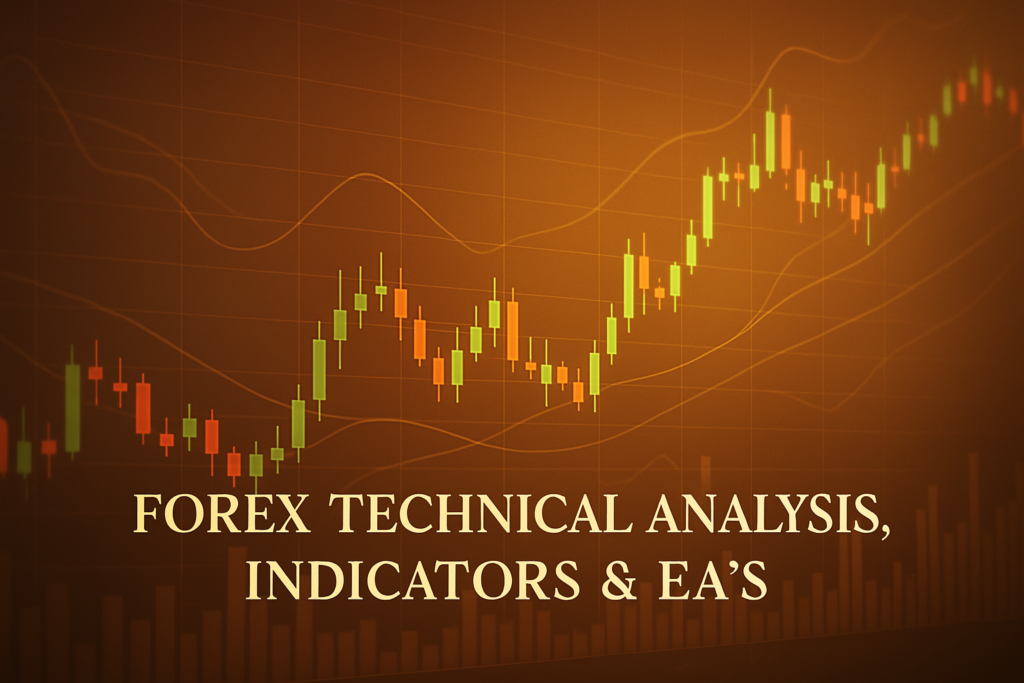
The 40 week moving average is essential for Forex traders to identify trends and make informed decisions.
The 40 week moving average is a popular tool in Forex trading, helping traders analyze price trends over time. It averages the closing prices of a currency pair over the last 40 weeks, smoothing out fluctuations and making it easier to spot trends. For both beginners and experienced traders, this average can be a powerful guide when making trading decisions.
However, many traders struggle with the 40 week moving average. Some find it confusing, while others don’t know how to apply it effectively. Understanding this concept is crucial, as it can lead to better trading outcomes and improved financial success.
In this article, we will explore the ins and outs of the 40 week moving average, including its history, advantages, disadvantages, and practical applications in trading strategies. By the end, you’ll have a clear understanding of how to leverage this tool for your Forex trading journey.
On August 06, 2025, the Forex market is expected to react strongly to various economic factors. For more information, check out the Forex Fundamental News Analysis August 06, 2025.
What is a 40 week moving average?
The 40 week moving average is a simple way to track the price movement of a currency pair over a specific period. Think of it as a line that follows the average price of a currency over the past 40 weeks. This line helps traders see whether the price is generally going up, down, or staying the same. It removes daily price noise, allowing traders to focus on the bigger picture.
Types of 40 week moving average
There are different types of moving averages, including:
- Simple Moving Average (SMA): This is the basic version, where you simply add up the prices and divide by the number of weeks.
- Exponential Moving Average (EMA): This type gives more weight to recent prices, making it more responsive to price changes.
- Weighted Moving Average: Similar to EMA, it assigns different weights to prices, but in a different way.
How does the 40 week moving average smooth out price action?
The 40 week moving average smooths out price action by averaging prices over time, which helps eliminate short-term fluctuations. Imagine a wavy line on a chart; the moving average helps flatten that line, making it easier to see the overall trend. This smoothing effect is beneficial for traders looking to identify trends and make informed decisions.
Common periods used and why
While the 40 week moving average is popular, traders also use other periods like 20, 50, or 200 weeks. Each period serves a different purpose. Shorter periods react quickly to price changes, while longer periods provide a more stable view of trends. The choice depends on your trading style and goals.
The History of 40 week moving average: How It Became Popular
Origin of 40 week moving average
The concept of moving averages dates back to the early 20th century. The 40 week moving average gained popularity as traders began to realize its effectiveness in smoothing price data. It was created to help traders identify trends and make better decisions.
When did traders start using it widely?
As technology advanced and more traders entered the market, the 40 week moving average became widely adopted. By the late 20th century, it was a staple in many traders’ toolkits, especially as charting software made it easier to calculate.
Real-life stories
Many professional traders have shared success stories about using the 40 week moving average. For instance, a trader might have noticed a consistent upward trend in a currency pair, leading them to invest and ultimately make significant profits. These stories highlight the practical benefits of understanding and applying the 40 week moving average.
Advantages and Disadvantages of 40 week moving average
Advantages:
- Helps identify trends easily: The 40 week moving average clearly shows the direction of price movements.
- Useful for dynamic support and resistance: Traders can use it to identify potential reversal points.
- Works well for crossover strategies: It can signal potential buy or sell opportunities when crossing with other averages.
Disadvantages:
- lags behind price movements: Because it averages past prices, it may not react quickly to sudden changes.
- Can give false signals in sideways markets: In a market without clear trends, it may lead to poor decisions.
How to Apply 40 week moving average on MT4 & MT5
Step-by-step guide to adding 40 week moving average on charts
To add the 40 week moving average on MT4 or MT5, simply follow these steps:
- Open your trading platform and select the currency pair you want to analyze.
- Click on the “Insert” menu, then choose “Indicators” and select “Trend” followed by “Moving Average.”
- In the settings, input “40” for the period and choose the type of average you prefer.
- Click “OK,” and the moving average will appear on your chart.
Customizing 40 week moving average settings
You can customize the colors and styles of the 40 week moving average to make it stand out on your charts. For instance, you might choose a bright color to easily differentiate it from other indicators.
Saving templates for easy application
Once you have set up your 40 week moving average, you can save your chart as a template. This way, whenever you open a new chart, you can apply the same settings with just one click!
5 to 7 Trading Strategies Using Only 40 week moving average
1. All-Time Frame Strategy (M5 to D1)
This strategy works across different time frames, allowing traders to spot trends regardless of their preferred trading style. For example, if the price is above the 40 week moving average, consider buying; if it’s below, consider selling.
2. Trending Strategies
In a trending market, traders can combine the 40 week moving average with price action. If the price consistently stays above the moving average, it may indicate a strong upward trend, suggesting buying opportunities.
3. Counter Trade Strategies
When the price moves significantly away from the 40 week moving average, traders might look for counter-trend setups. For example, if the price drops sharply below the moving average, a bounce back could signal a buy opportunity.
4. Swing Trades Strategies
This strategy involves looking for price swings around the 40 week moving average. Traders can buy when the price bounces off the moving average or sell when it hits resistance.
5. Breakout Strategies
When the price breaks through the 40 week moving average, it can signal a new trend. Traders can enter a position in the direction of the breakout, potentially capturing significant moves.
5 to 7 Trading Strategies Combining 40 week moving average with Other Indicators
1. Moving Average Convergence Divergence (MACD)
Combine the 40 week moving average with the MACD indicator to spot potential trend reversals. When the MACD crosses above the signal line while above the moving average, it may indicate a strong buy signal.
2. Relative Strength Index (RSI)
Using the RSI alongside the 40 week moving average can help identify overbought or oversold conditions. If the RSI shows overbought while the price is above the moving average, it may signal a potential sell.
3. Bollinger Bands
Use the 40 week moving average with Bollinger Bands to identify volatility and trend strength. When the price touches the upper band while above the moving average, it may be a good time to sell.
4. Stochastic Oscillator
Combine the 40 week moving average with the Stochastic Oscillator to identify momentum. If the Stochastic shows overbought conditions while the price is above the moving average, consider a sell position.
5. Fibonacci Retracement Levels
Using Fibonacci retracement levels with the 40 week moving average can help spot potential reversal points. If the price retraces to a Fibonacci level near the moving average, it may be a good buy opportunity.
On April 29, 2025, the USDCHF forecast suggests potential movements in the Forex market. For detailed insights, visit the USDCHF forecast April 29, 2025.
Top 10 FAQs About 40 week moving average
1. What is the purpose of the 40 week moving average?
The main purpose is to help traders identify trends and smooth out price fluctuations over time.
2. How often should I check the 40 week moving average?
It’s advisable to check it regularly, especially if you’re actively trading, but the frequency depends on your trading strategy.
3. Can I use the 40 week moving average for day trading?
While it’s more commonly used for longer-term trades, some day traders may still find value in it.
4. Is the 40 week moving average effective in all market conditions?
It works best in trending markets but can provide false signals in sideways markets.
5. Should I combine it with other indicators?
Yes, combining with other indicators can enhance the effectiveness of your trading strategy.
6. How do I choose the right type of moving average?
Your choice depends on your trading style; SMA is simpler, while EMA reacts faster to price changes.
7. Can I use the 40 week moving average for all currency pairs?
Yes, it can be applied to any currency pair, but be sure to consider each pair’s volatility.
8. How do I avoid false signals with the 40 week moving average?
Combining with other indicators and analyzing price action can help minimize false signals.
9. What is the best time frame to use the 40 week moving average?
The best time frame depends on your trading style, but it is often used on daily or weekly charts.
10. Can I automate trades using the 40 week moving average?
Yes, many trading platforms allow you to create automated strategies based on moving averages.
Conclusion
The 40 week moving average is a valuable tool for Forex traders, offering insights into price trends and potential trading opportunities. Understanding its advantages and limitations can enhance your trading strategies and decision-making process.
As you explore using the 40 week moving average, remember to test your strategies with demo accounts before risking real money. This practice can build your confidence and help you become a more successful trader.
Looking to stay informed on forex trends? This resource breaks it down well IG Group, Kiplinger
Expand Your Knowledge
- 📌 Forex Trading Learning Road Map
- 📌 Forex Trading Course with no Fees
- 📌 Forex Trading Issues, Problems, and Solutions
- 📌 Forex Daily Forecast & Live Updates
- 📌 Forex Fundamental & News Analysis: Tomorrow’s Market Movers & Trade Opportunities
- 📌 Forex Education Hub: Learn & Profit
- 📌 Forex Technical Analysis, Indicators & EA’s
Start Trading Today
Ready to take your forex trading to the next level? Open an account with Exness, one of the most trusted platforms in the industry. 👉 Sign Up Now and trade with confidence!
My recommended broker stands out with ultra-low spreads for beginners, instant withdrawals, and zero spread accounts for pro traders.
Trusted since 2008, lightning-fast execution, no hidden fees, and a secure, transparent trading environment—giving you the edge you need to succeed. 🚀
YouTube Video Library: Related Videos
Note: The video above is embedded from YouTube and is the property of its original creator. We do not own or take responsibility for the content or opinions expressed in the video.



